In this next series of images I’ve shifted the emphasis from the relationship between people and organizations to the links that people share by virtue of belonging to the same organizations. In the former case, both people and organizations are nodes of the network connected by lines (edges). In the latter case, only people are nodes. Organizations are represented by lines connecting people. Each person is connected to every other person with whom they share an organization. The result is a much thicker field of relationships–or at least the appearance of it.
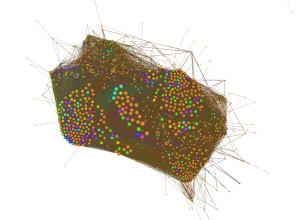

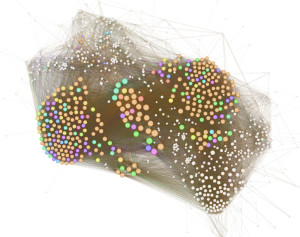
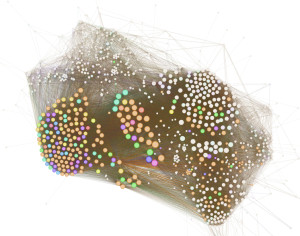
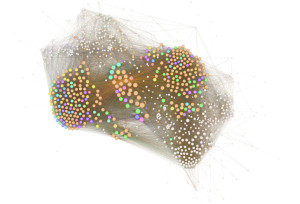
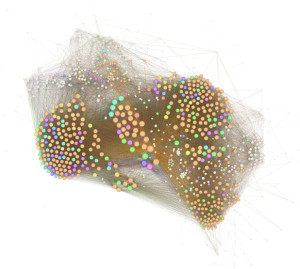

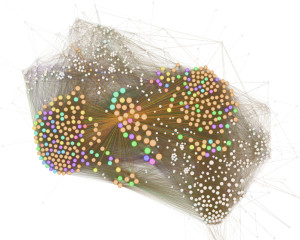
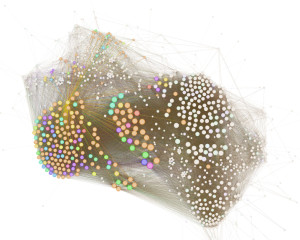
When I cycle through this set of images, I am reminded of brain scan imagery in which various types of stimuli ignite neurons in different parts of the brain. (In the gallery images, the colored dots are connected to the selected person while the white dots are not connected). There are four major clusters. None are completely homogeneous, but in the interest of description I’ll name them as if they are. From left to right, we begin with the immigrant trade union militants (e.g., Pauline Newman, and Rose Schneiderman who is slightly more connected to the WTUL group), move through the central group made up important of union and Socialist leaders (e.g., Debs, Berger, Maurer, Dubinsky) that also includes African American unionists Owen Chandler and Frank Crosswaithe. Moving further to the right we come to the mainstream, unremarkable AFL unionists on the bottom right, and finally at the top right corner we finish with railroad brotherhood leaders.
You can see the visual effect more strongly, although more slowly, in the interactive version of the chart One node network chart.